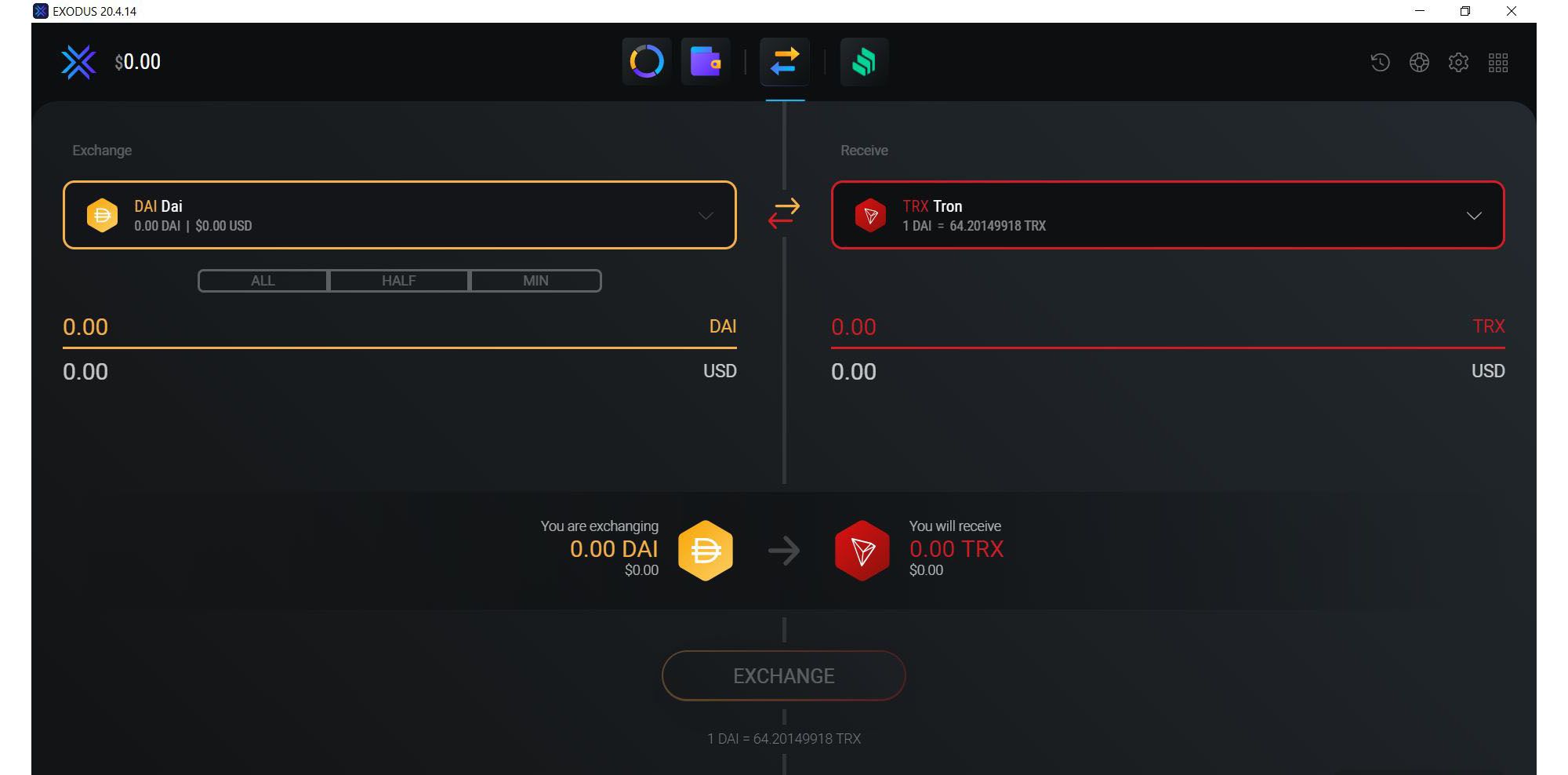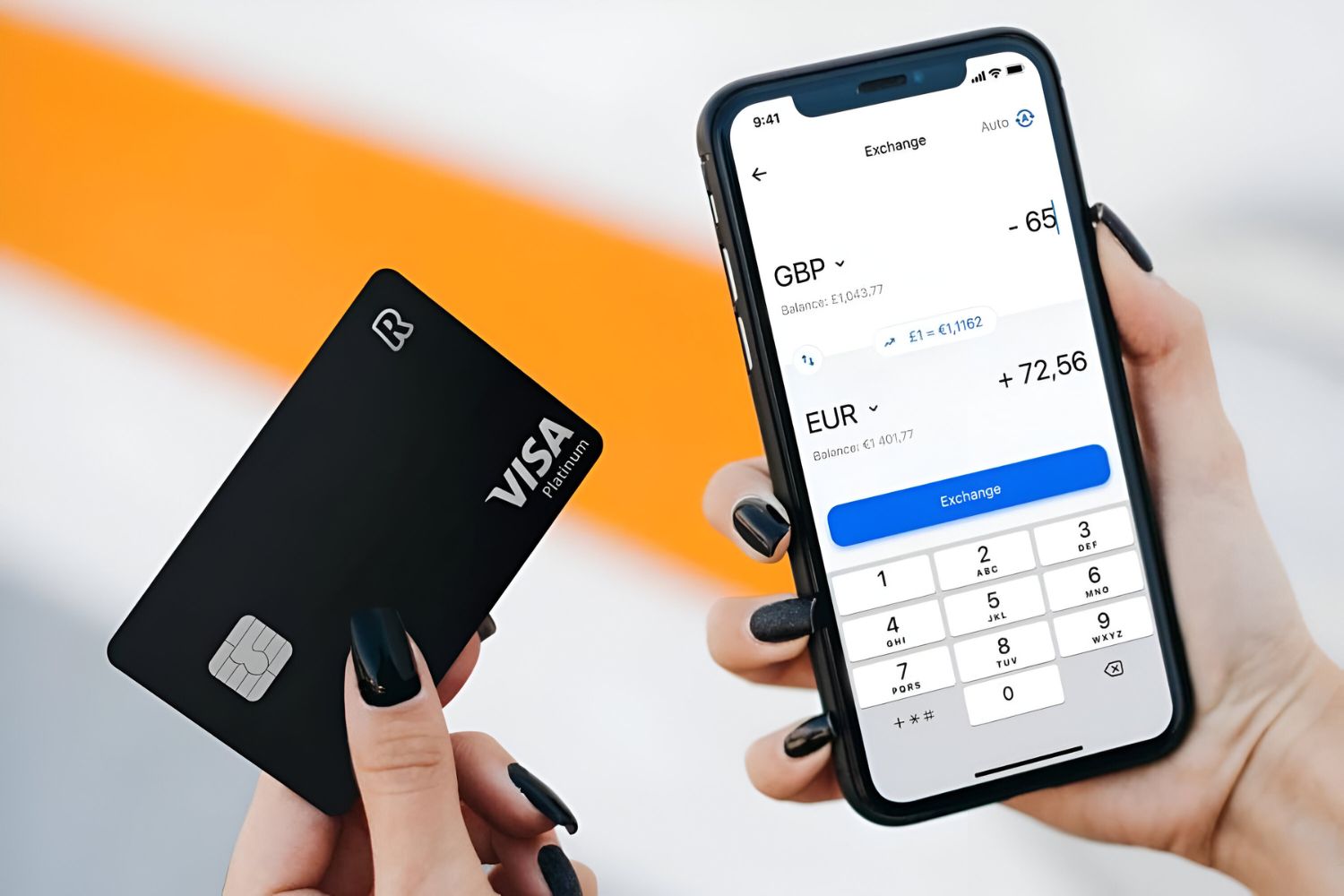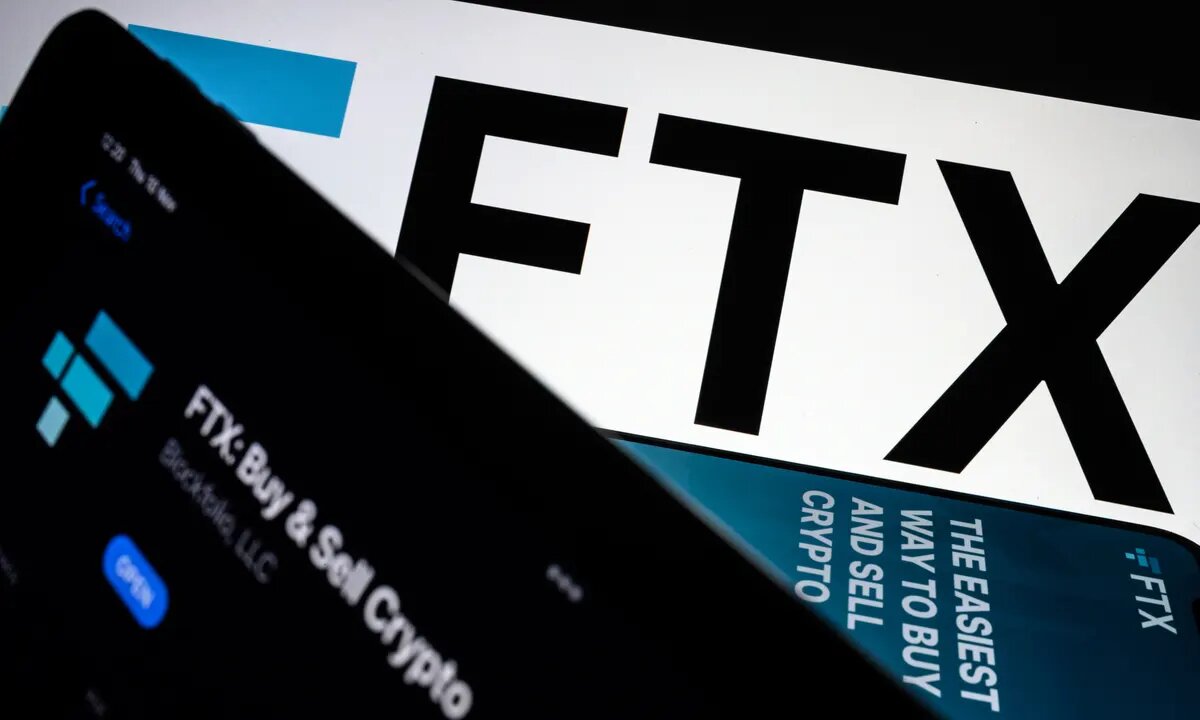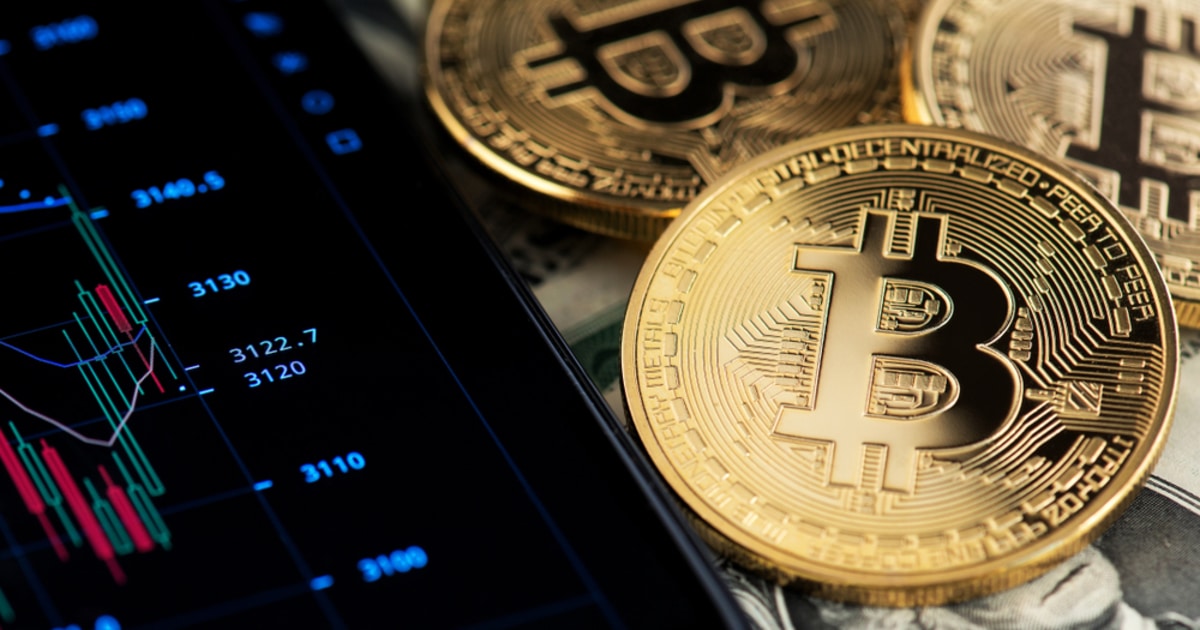Introduction
Welcome to the exciting world of cryptocurrency! If you’ve been actively involved in buying, selling, or trading digital currencies on a crypto exchange, you may have wondered about the process of taking your crypto off the exchange. This article will guide you through the steps and considerations involved in safely and securely moving your cryptocurrencies from the exchange to your own personal wallets.
But first, let’s clarify what a crypto exchange is. In simple terms, a crypto exchange is an online platform that allows users to buy, sell, and trade various cryptocurrencies. These exchanges provide a convenient way for users to enter and participate in the crypto market.
While keeping your digital assets on a crypto exchange may seem like a hassle-free option, there are several reasons why taking your crypto off the exchange is a wise decision. Firstly, storing your crypto on an exchange poses a security risk. Exchanges can be vulnerable to hacking attempts or even internal security breaches. By taking your crypto off the exchange, you have full control over the safety and security of your assets.
Secondly, some exchanges may have withdrawal restrictions or limitations. By transferring your crypto to personal wallets, you have the freedom to transact with your assets as you please, without any restrictions imposed by the exchange.
Lastly, taking your crypto off the exchange also allows you to participate in other activities such as staking, lending, or using decentralized applications (dApps). These activities often require you to have your crypto stored in a personal wallet rather than on an exchange.
Before you proceed with withdrawing your crypto, there are some important considerations to keep in mind. These include understanding the different types of wallets, choosing the right wallet for your needs, and ensuring you have a secure setup to protect your assets. In the following sections, we will explore these topics in detail, providing you with the knowledge and guidance necessary to confidently take your crypto off the exchange.
What is a Crypto Exchange?
A crypto exchange, also known as a cryptocurrency exchange, is a platform that enables users to buy, sell, and trade various cryptocurrencies. These exchanges serve as intermediaries, facilitating the exchange of digital assets between buyers and sellers. They act as digital marketplaces where users can access a wide range of cryptocurrencies and engage in trading activities.
When using a crypto exchange, users can deposit their fiat currency (such as USD, EUR, or other national currencies) or other cryptocurrencies to purchase different digital assets. These exchanges offer a variety of trading pairs, allowing users to trade one cryptocurrency for another or exchange cryptocurrencies for fiat currency.
Most crypto exchanges operate online, providing easy accessibility to users worldwide. They offer features such as order books, charts, and trading tools to assist users in managing their portfolios and executing trades. Additionally, exchanges may offer advanced trading options like margin trading, futures trading, and peer-to-peer trading, depending on the platform’s capabilities.
One important aspect to consider when choosing a crypto exchange is its reputation and security measures. Trustworthy exchanges implement robust security protocols to protect user funds and personal information from potential cyber threats. These measures may include two-factor authentication (2FA), cold storage for funds, and regular security audits to ensure a safe trading environment.
Additionally, different exchanges may have varying fee structures for transactions and withdrawals. It’s essential to understand these fees before engaging in trading activities, as they can impact your overall profitability.
While crypto exchanges provide a convenient way to enter the cryptocurrency market and participate in trading, it’s important to remember that keeping your digital assets on an exchange carries some risks. Exchanges are susceptible to hacking attempts, and in some cases, users may face challenges in accessing their funds due to regulations or exchange-related issues.
With this in mind, many individuals and investors opt to take their crypto off the exchange and store it in personal wallets for increased security and control over their assets. In the next sections, we will explore the reasons why you might want to take your crypto off the exchange and the various methods to do so.
Why Take Crypto off the Exchange?
While crypto exchanges provide a convenient platform for buying, selling, and trading cryptocurrencies, there are several reasons why you should consider taking your crypto off the exchange and storing it in personal wallets.
1. Security:
One of the main reasons to take your crypto off the exchange is to enhance its security. Exchanges can be vulnerable to hacking attempts, as they store large amounts of digital assets in hot wallets connected to the internet. By transferring your crypto to personal wallets, you can eliminate the risk of your funds being compromised in the event of an exchange hack.
2. Control:
By keeping your crypto on an exchange, you are essentially entrusting a third party with the custody of your assets. Transferring your crypto to personal wallets gives you full control over your funds. You are the sole custodian of your private keys, which are required to access and transact with your crypto. This empowers you to make independent decisions and removes any dependency on the exchange.
3. Privacy:
Exchanges may require users to provide personal information and go through identity verification processes in compliance with Know Your Customer (KYC) and Anti-Money Laundering (AML) regulations. By taking your crypto off the exchange and utilizing privacy-focused wallets, you can maintain a higher level of anonymity and protect your privacy.
4. Freedom of Use:
Some exchanges impose restrictions on the withdrawal and use of funds. By transferring your crypto to personal wallets, you gain the freedom to use your assets as you please. Whether you want to spend, invest, or participate in various DeFi projects, having control over your crypto allows you to explore different opportunities without any limitations imposed by the exchange.
5. Participating in Staking and Voting:
Many cryptocurrencies offer staking mechanisms that allow users to earn passive income by holding and “staking” their assets. Some exchanges do not support staking, but by taking your crypto off the exchange, you can actively participate in staking and voting for network governance.
Overall, taking your crypto off the exchange provides enhanced security, greater control, privacy, and the freedom to use your assets as you see fit. In the following sections, we will delve into the considerations you should keep in mind before withdrawing your crypto and the different methods you can use to transfer it from the exchange to personal wallets.
Considerations Before Withdrawing Crypto
Before you withdraw your crypto from the exchange and transfer it to personal wallets, there are several important factors to consider. These considerations will help ensure a smooth and secure transition of your digital assets:
1. Security: Ensure that your personal devices, such as your computer or smartphone, are adequately secured. This includes using updated and reputable antivirus software, enabling firewalls, and avoiding suspicious links or downloads. By taking these precautions, you can minimize the risk of malware or hacking attempts that could compromise your crypto wallets.
2. Research the Wallet: Before selecting a wallet to transfer your crypto to, it is crucial to conduct thorough research. Look for wallets that have a reputation for security, user-friendliness, and compatibility with your chosen cryptocurrencies. Read reviews, compare features, and consider using wallets that have been audited or are recommended by respected members of the crypto community.
3. Backup Your Wallet: It’s essential to create backups of your wallet’s private keys or seed phrases. These backups will allow you to recover your wallet and access your crypto in case of device failure, loss, or theft. Store your backups in secure locations, such as encrypted external hard drives or offline storage devices, and ensure they are protected from unauthorized access.
4. Consider Transaction Fees: Different wallets and blockchains have varying fee structures for transferring cryptocurrencies. Consider the transaction fees associated with using a particular wallet and blockchain network. Higher fees may be required for faster confirmation times, while lower fees may result in longer processing times. Evaluating the fees will help you make an informed decision based on your priorities and budget.
5. Understand Network Congestion: Some blockchains, such as Bitcoin and Ethereum, may experience periods of high network congestion. This congestion can result in slower transaction confirmations and higher fees. Stay informed about the current state of the blockchain you plan to use and adjust your expectations accordingly. Consider using alternative blockchains or layer 2 solutions that offer faster and more cost-effective transactions.
6. Verify Withdrawal Addresses: Double-check the withdrawal addresses before initiating any transfers. Cryptocurrency transactions are irreversible, and if you send your assets to an incorrect or fraudulent address, recovering them may be nearly impossible. Always ensure the accuracy and legitimacy of the withdrawal addresses by cross-referencing them through multiple reliable sources.
By considering these factors before withdrawing your crypto, you can enhance the security and efficiency of the transfer process. Taking the time to thoroughly research wallets, back up your data, and exercise caution will help safeguard your digital assets throughout the withdrawal and storage process.
Different Ways to Take Crypto off Exchange
When it comes to taking your crypto off the exchange, there are multiple methods you can choose from. Each method offers its own advantages and considerations. Let’s explore some of the most common ways to transfer your crypto from the exchange to personal wallets:
1. Software Wallets: Software wallets are applications installed on your computer or mobile device. They provide a convenient and user-friendly interface for managing and storing your digital assets. Popular software wallets include Exodus, Atomic Wallet, and Trust Wallet. To transfer your crypto, you would typically generate a wallet address within the software and provide it to the exchange for withdrawal.
2. Mobile Wallets: Mobile wallets are smartphone applications that allow you to manage your crypto on the go. They offer a straightforward user experience and often have built-in security features such as biometric authentication. Examples of popular mobile wallets include Coinbase Wallet, Mycelium, and Edge Wallet.
3. Hardware Wallets: Hardware wallets are physical devices that provide the highest levels of security for storing your crypto. These wallets securely store your private keys offline and require physical confirmation to complete transactions. Popular hardware wallet options include Ledger Nano S, Trezor, and KeepKey. To transfer your crypto, you would create a new wallet address on the hardware device and provide it to the exchange.
4. Paper Wallets: Paper wallets involve storing your private keys offline on a physical piece of paper. They offer a cold storage solution with no connectivity to the internet, making them highly secure. Creating a paper wallet involves generating a pair of public and private keys and printing them out. When transferring your crypto, you would send it to the public address indicated on the paper wallet.
5. Desktop Wallets: Desktop wallets are software applications installed on your computer. They provide a balance of convenience and security. Examples of popular desktop wallets include Electrum, Bitcoin Core, and Jaxx Liberty. Similar to software wallets, you would generate a wallet address within the desktop wallet and use it for withdrawal from the exchange.
6. Web Wallets: Web wallets are online wallets accessible through a web browser. They provide easy access to your crypto from any device with an internet connection. Web wallets such as MetaMask, MyEtherWallet, and Binance Wallet offer a user-friendly interface for managing your digital assets. However, it’s important to practice caution with web wallets, as they may have higher security risks compared to other wallet options.
It’s important to select a wallet option that aligns with your specific needs in terms of security, accessibility, and usability. Consider factors such as the type of crypto you own, the frequency of your transactions, and your desired level of control over your private keys. Regardless of the method you choose, always take steps to secure your wallet and follow best practices to protect your crypto assets.
Wallets: What Are They and How to Use Them?
Wallets play a crucial role in the world of cryptocurrency. They enable users to securely store, manage, and transact with their digital assets. But what exactly are wallets, and how do you use them? Let’s explore:
1. What Are Wallets?
In the context of cryptocurrencies, wallets are digital tools or software applications that allow you to store your private keys, which are essentially the access codes to your crypto holdings. These keys are needed to authenticate transactions and manage the ownership of your digital assets on a specific blockchain network.
2. Types of Wallets:
There are various types of wallets available, each offering different features and levels of security:
- Software Wallets: These wallets are software applications that can be installed on your computer or mobile device. They come in different forms, such as desktop wallets, mobile wallets, and web wallets, depending on their accessibility and connectivity options.
- Hardware Wallets: Hardware wallets are physical devices that store your private keys offline. They provide enhanced security by isolating your keys from potential online threats. Hardware wallets are often considered the most secure option for long-term storage of cryptocurrencies.
- Paper Wallets: Paper wallets involve printing your private and public keys on a physical piece of paper. They offer an offline, cold storage solution that is highly secure but requires careful safekeeping to avoid loss or damage.
3. How to Use Wallets:
To use a wallet, you typically follow these steps:
- Choose the right wallet: Determine the type of wallet that suits your needs and preferences. Consider factors such as security features, accessibility, user-friendliness, and compatibility with the cryptocurrencies you wish to store.
- Set up your wallet: Install the wallet software or connect the hardware device to your computer or smartphone. Follow the instructions provided by the wallet provider to create a new wallet or import an existing one.
- Generate your key pair: Your wallet will generate a unique public-private key pair, with the private key being the most important aspect. Safeguard your private key carefully as it grants access to your funds.
- Receive funds: To receive funds, provide your wallet’s public address to the sender. This address serves as the destination for the cryptocurrency being sent to you.
- Send funds: When you want to send funds, initiate a transaction within your wallet. Enter the recipient’s wallet address and the amount you wish to send. Review and confirm the transaction details before authorizing the transfer with your private key.
- Ensure security: Depending on the type of wallet, take necessary security measures such as enabling two-factor authentication (2FA), creating backups of your keys, and implementing additional security layers to protect your assets. Regularly update your wallet software to benefit from the latest security patches.
When using wallets, it’s important to practice good security hygiene. Keep your software and devices up to date, use strong and unique passwords, and be cautious of phishing attempts or malicious software that may compromise your wallet’s security.
By understanding the different types of wallets available and following best practices, you can safely and confidently store and transact with your cryptocurrencies.
Choosing the Right Wallet
Choosing the right wallet is a critical decision when it comes to safeguarding your cryptocurrencies. With various wallet options available, it’s important to consider your needs, preferences, and the level of security you require. Here are some factors to consider when choosing the right wallet for your crypto holdings:
1. Security Features:
Security should be your top priority when selecting a wallet. Look for wallets that offer strong encryption, two-factor authentication (2FA), and secure key storage. Hardware wallets, such as Ledger and Trezor, provide an added layer of security by keeping your private keys offline. Consider the reputation of the wallet provider and investigate if the wallet has undergone independent security audits.
2. Supported Cryptocurrencies:
Different wallets support different cryptocurrencies. Ensure that the wallet you choose is compatible with the cryptocurrencies you plan to store. Popular wallets like Exodus and MyEtherWallet support a wide range of cryptocurrencies, while others may have more limited options.
3. User-Friendliness:
Consider the user-friendliness of the wallet interface. A wallet with an intuitive and easy-to-navigate design will make it more convenient for you to manage your crypto holdings. Look for wallets that provide clear instructions and a seamless user experience, especially if you are new to the world of cryptocurrency.
4. Accessibility:
Determine how and where you want to access your wallet. Software wallets are often available for desktop computers, mobile devices, or web browsers, providing flexibility in how you manage your crypto. Hardware wallets, on the other hand, require a physical connection to a computer or smartphone. Consider the convenience and compatibility of the wallet with your preferred devices.
5. Development and Community Support:
Research the wallet’s development team and the size of its user community. Active development and regular updates are indicators of a wallet’s commitment to security and usability. Additionally, a strong community often means there are ample resources available for troubleshooting and support.
6. Reviews and Reputation:
Read reviews and gather feedback from trusted sources or community forums to gauge the reputation of a wallet. Look for wallets that have positive reviews and a history of reliable performance. Be wary of wallets with a history of security vulnerabilities or user-reported issues.
7. Additional Features:
Consider any additional features or integrations offered by the wallet. Some wallets provide features such as built-in exchange services, decentralized application (dApp) compatibility, or staking capabilities. Evaluate these additional features based on your specific needs and interests.
Ultimately, the right wallet for you will depend on your specific requirements and priorities. It’s recommended to use a combination of wallets based on the type of crypto assets you hold and your desired level of security and accessibility. Diversifying your wallets can provide added protection against potential risks while catering to different use cases.
By carefully considering these factors and doing thorough research, you can select a wallet that aligns with your needs and keeps your cryptocurrencies safe and secure.
Setting Up a Wallet
Setting up a wallet is an essential step in managing your cryptocurrencies. Whether you choose a software wallet, a hardware wallet, or a paper wallet, the setup process typically involves several important steps. Here’s a general guide to setting up a wallet:
1. Research and Choose a Wallet:
First, conduct thorough research to find a wallet that suits your needs and preferences. Consider factors such as security features, supported cryptocurrencies, user-friendliness, accessibility, and additional features. Popular wallets include Ledger Nano S (hardware), Exodus (software), and MyEtherWallet (web-based).
2. Download or Purchase the Wallet:
Depending on the type of wallet you’ve chosen, proceed to download the wallet software or purchase the hardware device. Ensure that you only download wallets from official sources to avoid scams or malicious software.
3. Create a New Wallet or Import Existing One:
After installing the wallet software or connecting the hardware device, you will have the option to create a new wallet or import an existing one. For new wallets, you will typically generate a new private-public key pair, while importing wallets requires the input of your private key or seed phrase.
4. Secure Your Wallet:
Take the necessary steps to secure your wallet. Set up strong and unique passwords, enable any available two-factor authentication (2FA), and consider additional security measures provided by the wallet software or device. Keep in mind that the security of your wallet is ultimately your responsibility.
5. Back Up Your Wallet:
Creating a backup of your wallet is crucial to ensure you can access your funds in case of loss, theft, or device failure. Most wallets will provide you with a recovery phrase or seed. Write down this phrase on a piece of paper and store it in a safe and secure location. Avoid storing it digitally or on cloud storage platforms.
6. Fund Your Wallet:
To start using your wallet, you will need to fund it with cryptocurrencies. Depending on the wallet, you may obtain your wallet address from the software or device, which you can then use to receive funds from other wallets or exchanges. Ensure you validate the wallet address before receiving any crypto.
7. Test Transactions:
Before making significant transactions, it’s a good practice to start with small test transactions to ensure that everything is functioning correctly. Sending a small amount of cryptocurrency to another wallet or address will validate that your wallet is set up correctly and that you can successfully send and receive funds.
Remember, each wallet may have its own specific setup instructions, so always refer to the wallet provider’s official documentation or support resources for comprehensive guidance.
By following these steps and understanding the specific setup process for your chosen wallet, you can successfully set up a wallet and begin managing your cryptocurrencies securely. Safeguard your wallet’s information and backups, and regularly update your wallet software or firmware to benefit from the latest security enhancements.
Transferring Crypto from Exchange to Wallet
Transferring your cryptocurrencies from the exchange to your personal wallet is an important step in taking control of your digital assets. Here’s a general guide on how to transfer crypto from an exchange to a wallet:
1. Select and Set Up Your Wallet:
Before you can initiate the transfer, ensure that you have selected and set up the wallet to which you want to send your crypto. Follow the steps outlined by the wallet provider to install and secure your wallet software or connect and initialize your hardware wallet.
2. Verify Wallet Address:
Generate a wallet address from your chosen wallet. This address is a unique identifier that acts as the destination for your crypto. Take care to verify that the wallet address is correct and matches the one provided by the wallet software or device. Copying and pasting the address is recommended to avoid any errors.
3. Log into the Exchange Account:
Access your account on the cryptocurrency exchange where your funds are currently held. Navigate to the withdrawal or transfer section of the exchange’s user interface.
4. Choose the Crypto and Amount:
Choose the specific cryptocurrency you wish to transfer from the exchange to your wallet. Enter the amount you want to transfer, taking note of any withdrawal limits or transaction fees that may apply. It’s advisable to start with a smaller amount for the initial transfer to ensure everything goes smoothly.
5. Enter the Wallet Address:
Paste the wallet address from your personal wallet into the designated field on the exchange platform. Make sure to double-check that the address is accurate and matches your wallet’s address before confirming the transfer.
6. Confirm and Initiate the Transfer:
Review all the details of the withdrawal, including the amount, fees, and the destination wallet address. Once you are confident that all information is correct, confirm the transfer. Depending on the exchange and network congestion, the transfer may occur instantly or take some time to be processed on the blockchain.
7. Monitor the Transaction:
After initiating the transfer, keep an eye on the transaction status. You can track the progress by searching for the transaction hash (TXID) on a blockchain explorer. The transaction hash will provide you with real-time updates on the status of the transfer and its confirmation on the blockchain.
8. Verify Receipt in Your Wallet:
Once the transaction is confirmed on the blockchain, check your wallet to ensure that the crypto has been successfully received. The balance in your wallet should reflect the amount transferred, and you should see the transaction details in your wallet’s transaction history.
It’s worth noting that the transfer time and fees can vary depending on the blockchain network congestion and the specific crypto you are transferring. Be patient and consider checking the average transaction times and fees for the particular cryptocurrency you are moving.
By following these steps, you can securely transfer your cryptocurrencies from the exchange to your personal wallet, allowing you to have full control and ownership over your digital assets.
Tips for Securing Your Crypto Wallet
Securing your crypto wallet is essential to protect your digital assets from potential threats and unauthorized access. Here are some important tips to enhance the security of your wallet:
1. Use Strong Passwords: Create a strong, unique password for your wallet. Avoid using common phrases or easily guessable information. Include a combination of uppercase and lowercase letters, numbers, and special characters. A strong password will add an extra layer of protection against unauthorized access.
2. Enable Two-Factor Authentication (2FA): Activate 2FA on your wallet whenever possible. 2FA requires an additional verification step, such as a temporary code sent to your mobile device, to access your wallet. This adds an extra layer of security, even if your password is compromised.
3. Keep Software Up to Date: Regularly update your wallet software or firmware to ensure you benefit from the latest security patches and improvements. Developers frequently release updates to address vulnerabilities and enhance the overall security of the wallet.
4. Backup Your Wallet: Regularly create backups of your wallet’s private keys, recovery phrases, or keystores. Store these backups in secure locations, such as encrypted external devices or offline storage solutions. Backups are critical in case of device loss, malfunction, or data corruption.
5. Store Offline: Consider storing your wallet and backups offline, away from direct internet connectivity. This approach, known as “cold storage,” prevents hackers from gaining access to your wallet through online attacks. Hardware wallets and paper wallets provide offline storage options that are highly secure.
6. Use Trusted Wallets: Only use reputable and trusted wallet providers. Do thorough research to ensure that the wallet software or hardware device comes from a trusted source. Look for wallets that have been audited or recommended by the cryptocurrency community.
7. Use Secure Networks: Be cautious when accessing your wallet on public Wi-Fi networks or other unsecured networks. Public networks may expose your wallet to potential snooping or hacking attempts. It’s best to use a trusted and secure network when managing your wallet.
8. Be Wary of Phishing Attempts: Beware of phishing attempts aimed at stealing your wallet information. Avoid clicking on suspicious links or providing your wallet details on untrusted websites. Always verify the authenticity of the website or communication before entering any sensitive information.
9. Educate Yourself: Stay informed about the latest security practices and developments in the crypto space. Regularly educate yourself about potential threats and best practices for securing your digital assets. By staying updated, you can proactively protect your wallet and funds.
10. Limit Exposure: Minimize the exposure of your wallet’s public address. Sharing your address publicly increases the risk of targeted attacks or unwanted attention. Only provide your wallet address to trusted sources for legitimate transactions.
By implementing these security tips, you can significantly reduce the risk of unauthorized access and protect your crypto assets. Remember, securing your wallet is an ongoing process, so make sure to stay vigilant and adapt to any new security measures or threats that emerge in the crypto space.
Using Hardware Wallets for Added Security
Hardware wallets are considered one of the most secure options for storing cryptocurrencies. These physical devices offer enhanced security measures that provide peace of mind to crypto holders. Here are the key benefits and considerations when using hardware wallets:
1. Enhanced Security:
Hardware wallets provide an additional layer of security by storing your private keys offline, away from potential threats like malware or hacking attempts. The private keys never leave the device, which significantly reduces the risk of unauthorized access to your crypto assets.
2. Protection Against Online Attacks:
Since hardware wallets are offline most of the time, they are immune to online attacks and vulnerabilities associated with internet connectivity. This protects your wallet from keyloggers, phishing attempts, and other online threats that could compromise the security of your crypto assets.
3. Isolation of Private Keys:
Private keys stored in hardware wallets are isolated and inaccessible to other devices or software applications. Even if your computer or smartphone is compromised, the private keys remain secure within the hardware device. This isolation helps to safeguard your crypto assets from potential breaches.
4. User-Friendly Interface:
Most hardware wallets come with user-friendly interfaces that make managing your cryptocurrencies intuitive and straightforward. They often feature built-in screens and buttons, allowing you to review transaction details and authorize transactions directly on the device.
5. Backup and Recovery:
Hardware wallets typically provide backup and recovery options to protect against device loss, damage, or theft. When setting up a hardware wallet, you generate a recovery seed, which is a series of random words that can be used to restore your wallet on a new device if necessary. It’s crucial to securely and offline store your recovery seed in multiple locations.
6. Wide Range of Supported Cryptocurrencies:
Hardware wallets generally support a wide range of cryptocurrencies, allowing you to store multiple assets in a single device. Popular hardware wallets like Ledger and Trezor have extensive compatibility with various cryptocurrencies, including Bitcoin, Ethereum, and many others.
7. Firmware Upgrades and Security Audits:
Hardware wallet manufacturers regularly release firmware upgrades to address vulnerabilities and enhance security features. Additionally, reputable hardware wallet providers often undergo independent security audits to ensure the integrity and robustness of their products.
8. Considerations:
While hardware wallets offer significant security advantages, there are a few considerations to keep in mind:
- Cost: Hardware wallets have an upfront cost, typically ranging from around $50 to $200. However, this cost is justified by the added security and peace of mind they offer.
- Physical Security: Since hardware wallets are physical devices, they need to be stored securely. Protect your hardware wallet from damage, loss, or theft by keeping it in a safe place, such as a locked drawer or a safe deposit box.
- Usability: Although hardware wallets provide excellent security, they may require some level of technical expertise to set up and use. Familiarize yourself with the instructions provided by the manufacturer and follow best practices for securing your hardware wallet.
Using a hardware wallet serves as an effective security measure for protecting your cryptocurrencies. It offers peace of mind by keeping your private keys offline and away from potential threats. By following the provided instructions and practicing good security hygiene, you can ensure the safety of your crypto assets.
Storing Your Recovery Seed and Private Keys
When it comes to protecting your cryptocurrencies, storing your recovery seed and private keys securely is of utmost importance. These are crucial pieces of information that grant access to your wallet and control over your digital assets. Here are some key considerations for storing your recovery seed and private keys:
1. Write it Down:
When you set up a wallet, you will typically generate a recovery seed, which is a series of random words that serve as a backup for your wallet. It is essential to write down the recovery seed on paper or metal and store it in a safe and secure location. Avoid storing it digitally as it might be vulnerable to cyberattacks or data loss.
2. Multiple Copies:
Create multiple copies of your recovery seed and store them in separate secure locations. This serves as a backup in case one copy is lost, damaged, or inaccessible. Consider using fireproof and waterproof storage solutions, such as a safe deposit box or a well-concealed home safe, to protect your backup copies.
3. Avoid Digital Storage:
Do not store your recovery seed or private keys in digital format. Digital storage is susceptible to cyber threats like hacking, malware, or data breaches. Even if stored in encrypted files, the risk of unauthorized access remains. Keep your sensitive information offline to minimize the chance of theft or compromise.
4. Offline Storage:
Consider using offline storage options, such as hardware wallets or paper wallets, to secure your private keys. Hardware wallets store private keys on a device disconnected from the internet, providing enhanced security. Paper wallets involve printing out your private and public keys on a physical piece of paper and keeping it in a secure location.
5. Use Durable Materials:
Choose durable materials for storing your recovery seed and private keys. Paper can deteriorate over time, so consider using archival-grade paper or metal plates designed to withstand physical damage and environmental factors. Ensure that the ink used for writing is long-lasting and won’t fade or smudge over time.
6. Protecting Against Natural Disasters:
Take steps to protect your recovery seed and private keys from natural disasters, such as fires or floods. Consider using waterproof and fireproof storage solutions to safeguard your information. Keep in mind that even the most secure storage methods can be vulnerable to extreme circumstances, so plan for contingencies accordingly.
7. Share with Trusted Individuals:
In case of an emergency or unforeseen circumstances, it can be helpful to share your recovery seed and private key information with a trusted individual, such as a spouse, family member, or attorney. However, exercise caution and ensure that the person understands the importance of keeping the information secure and confidential.
8. Regularly Review and Update:
Periodically review the physical storage of your recovery seed and private keys. Ensure that the information is still readable, understandable, and accessible. If you switch storage methods or backup locations, update your records accordingly to maintain accurate information.
Remember, your recovery seed and private keys are the keys to your wallet and cryptocurrencies. Treat them with the utmost care and take all necessary precautions to keep them safe from loss, theft, or unauthorized access. By securely storing your recovery seed and private keys, you maintain control over your digital assets and mitigate the risks associated with their loss or compromise.
How to Safely Send Crypto from Wallet to Wallet
When sending cryptocurrency from one wallet to another, it’s crucial to follow certain steps to ensure a safe and successful transfer. Here’s a guide on how to safely send crypto from one wallet to another:
1. Verify Wallet Addresses:
Double-check the wallet address of the recipient before initiating the transaction. Cryptocurrency transactions are irreversible, and if you send your assets to the wrong address, they may be lost forever. Always verify the accuracy of the recipient’s wallet address by cross-referencing it through multiple reliable sources.
2. Confirm Network Compatibility:
Ensure that the cryptocurrency you intend to send is compatible with the recipient’s wallet and the underlying blockchain network. Different cryptocurrencies operate on various blockchain networks, and not all wallets support every cryptocurrency. Verify that the sender’s and recipient’s wallets are both compatible with the specific digital asset.
3. Set Appropriate Transaction Fees:
Determine the appropriate transaction fees based on the network congestion and desired confirmation time. Higher fees generally result in faster confirmations, while lower fees may cause delays. Research the current network fees, or use wallet tools that automatically estimate the appropriate fee based on network conditions.
4. Review Transaction Details:
Double-check all transaction details, including the amount, recipient’s wallet address, and transaction fees. Ensure that the information is accurate before proceeding with the transaction. Pay careful attention to decimal points, as even the smallest mistake can lead to significant financial losses.
5. Set Transaction Priorities:
If time is of the essence, consider prioritizing your transaction by setting a higher fee or using a transaction acceleration service. This can expedite the confirmation process, especially during periods of high network congestion.
6. Encrypt Your Wallet:
Ensure that your wallet is encrypted and protected with a strong, unique password. Encryption adds an extra layer of security to your wallet, making it more difficult for unauthorized individuals to access your funds in case of a security breach.
7. Be Wary of Phishing Attempts:
Beware of phishing attempts and fraudulent websites posing as legitimate wallet providers. Only access wallets through official sources and double-check the website’s URL to avoid submitting your private keys or personal information to malicious actors.
8. Keep Private Keys Secure:
Never share your wallet’s private keys, recovery seed, or any other sensitive information with anyone. Your private keys should remain confidential and only accessible to you. Sharing your private keys puts your funds at risk of theft or unauthorized access.
9. Wait for Confirmation:
After initiating the transaction, wait for confirmations on the blockchain. The number of confirmations required may vary depending on the cryptocurrency and the recipient’s wallet policy. Wait until the transaction reaches the desired number of confirmations before considering it fully completed.
10. Keep Records of Transactions:
Maintain a record of your cryptocurrency transactions, including date, amount, sender/receiver information, and transaction IDs. This record will help you track your transaction history and resolve any potential disputes or issues in the future.
By following these steps, you can safely send your cryptocurrencies from one wallet to another. These precautions help mitigate the risk of errors, fraudulent activities, and loss of funds, ensuring a smooth and secure transfer process.
Receiving Crypto from Wallet to Wallet
Receiving cryptocurrency from one wallet to another is a straightforward process that involves generating a wallet address and sharing it with the sender. Here is a guide on how to receive crypto from one wallet to another:
1. Generate a Receiving Address:
Access your wallet and generate a unique receiving address. Depending on the wallet, this may be referred to as a public key, wallet address, or receive address. The wallet will usually provide an option to generate a new address specifically for receiving funds. Each cryptocurrency you receive will have its own unique address, so ensure you generate the appropriate one for the cryptocurrency you expect to receive.
2. Share the Receiving Address:
Share your receiving address with the sender who wishes to send you cryptocurrency. Provide them with the correct address by copying and pasting it or scanning the associated QR code. Double-check the accuracy of the address to ensure the sender is sending funds to the intended destination.
3. Verify Transaction Details:
Prior to receiving the cryptocurrency, confirm with the sender the details of the transaction, such as the amount and type of cryptocurrency they are sending. This will help ensure that both parties are on the same page and that the transaction is accurate.
4. Wait for Transaction Confirmation:
Once the sender initiates the transaction and broadcasts it to the blockchain network, you will need to wait for confirmations. The number of confirmations required varies depending on the cryptocurrency and the recipient’s wallet policy. Confirmations provide validation and ensure the transaction’s integrity before the funds are fully available in your wallet.
5. Check Your Wallet Balance:
After the transaction receives the required confirmations, check your wallet balance to confirm the successful receipt of the cryptocurrency. The received funds should reflect in your wallet’s balance, and you should see a transaction record in your transaction history.
6. Review Transaction Details:
Inspect the transaction details in your wallet’s transaction history to ensure that everything matches the expected transaction. Verify the amount received, the date and time of the transaction, and the sender’s wallet address to ensure accuracy.
7. Maintain a Record:
Maintain a record of all received cryptocurrency transactions, including the date, amount, sender’s information, and transaction IDs. This record will help you track your transaction history and provide an overview of your received funds.
8. Security Precautions:
Ensure that your wallet is secure by practicing good security measures, such as enabling two-factor authentication (2FA), regularly updating your wallet software, and keeping your private keys or recovery seed phrase safe and confidential. Protecting your wallet ensures the safety of your received funds.
Receiving cryptocurrency from one wallet to another is an essential step in managing your digital assets. By following these steps and taking necessary security precautions, you can securely receive cryptocurrency and have full control over your funds in your wallet.
Common Mistakes to Avoid When Taking Crypto off Exchange
Taking your crypto off the exchange and transferring it to your personal wallets is a crucial step in securing your digital assets. However, there are several common mistakes that individuals should avoid to ensure a smooth and secure transition. Here are some of the most prevalent mistakes to steer clear of:
1. Sending Crypto to the Wrong Address:
One of the most critical errors to avoid is sending your crypto to the wrong wallet address. Double-check the recipient’s address before initiating the transaction and verify its accuracy by cross-referencing it through trusted sources. Sending your funds to an incorrect address may result in permanent loss as cryptocurrency transactions are generally irreversible.
2. Not Saving Recovery Seed or Private Keys:
Failing to securely store your recovery seed or private keys is a grave mistake. Losing access to your seed or private keys can result in permanent loss of your crypto. Create backups of these critical pieces of information and store them offline in secure locations. Make sure to protect them from physical damage, loss, or unauthorized access.
3. Neglecting Wallet Security:
Ignoring wallet security measures can put your digital assets at risk. Enable strong passwords, two-factor authentication (2FA), and any other available security features offered by your wallets. Regularly update your wallet software or firmware and refrain from using public Wi-Fi networks or untrusted devices when accessing your wallet.
4. Falling for Phishing Attempts:
Be cautious of phishing attempts from malicious actors posing as legitimate wallet providers or exchanges. Avoid clicking on suspicious links in emails or messages and never provide your private keys or sensitive information in response to unsolicited requests. Always verify the legitimacy of the website or communication before taking any action.
5. Ignoring Network Fees and Confirmation Times:
Failing to consider network fees and confirmation times can result in unexpected costs or delayed transactions. Research and understand the current network fees associated with your chosen cryptocurrency and adjust your transaction fees accordingly. Consider the level of urgency for your transaction and set appropriate fees to achieve desired confirmation times.
6. Not Double-Checking Transaction Details:
Careless mistakes can occur when not double-checking transaction details. Verify the accuracy of the recipient’s wallet address, the amount being sent, and any additional information before confirming the transaction. A simple typo or oversight can lead to irreversible consequences, jeopardizing your funds.
7. Lack of Diversification in Storage:
Relying solely on a single wallet or storage solution can increase the risk of loss. Consider diversifying your storage methods, such as using a combination of hardware wallets, software wallets, or paper wallets. This ensures redundancy and protection against specific risks associated with a single wallet type.
8. Disregarding Regular Updates:
Neglecting to update your wallet software or firmware can make it vulnerable to security breaches. Wallet developers regularly release updates to enhance security, fix bugs, and add new features. Stay up to date with the latest versions to benefit from improved security measures and ensure the integrity of your wallet.
Avoiding these common mistakes when taking your crypto off the exchange will help mitigate risks and ensure the safety of your digital assets. By practicing caution, taking necessary security steps, and staying informed, you can confidently transition your crypto to personal wallets.
Conclusion
Transferring your cryptocurrencies from the exchange to personal wallets is an important step in securing your digital assets. By taking your crypto off the exchange, you gain control, enhance security, and have the freedom to use your assets as you please.
In this article, we have explored various aspects of safely taking crypto off the exchange. We started by understanding what a crypto exchange is and why it’s beneficial to move your crypto to personal wallets. We then discussed considerations before withdrawing crypto and different methods to take crypto off the exchange, such as software wallets, hardware wallets, and paper wallets.
We also delved into topics like selecting the right wallet, setting up wallets securely, securely sending and receiving crypto between wallets, and avoiding common mistakes in the process.
Throughout these discussions, we emphasized the importance of security measures such as strong passwords, two-factor authentication (2FA), careful verification of addresses, offline storage of private keys and recovery seeds, and regular software updates.
Remember, the crypto landscape is continually evolving, and staying informed is key to maintaining the security and integrity of your digital assets. Stay updated on best practices, emerging threats, and advancements in wallet security.
By following the guidance and precautions outlined in this article, you can safely take your crypto off the exchange and have greater control over your digital assets. Safeguard your wallets, be cautious of potential risks, and make informed decisions to protect and manage your cryptocurrencies effectively.

























